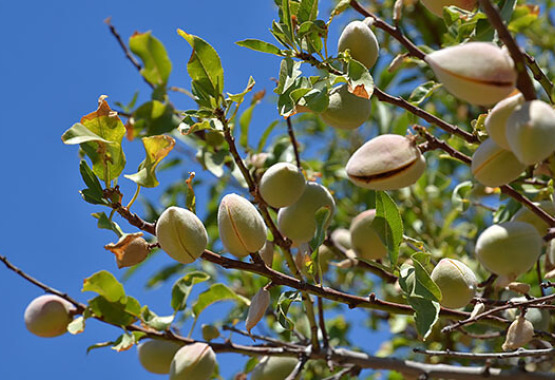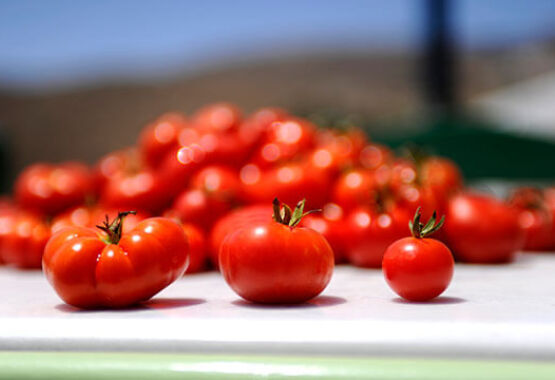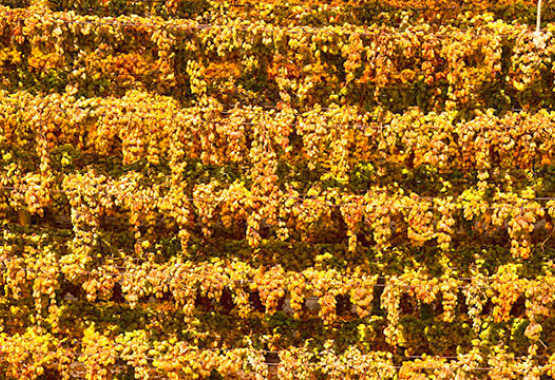
AROUND GREECE
Soft, creamy and hard, white and yellow, fresh and mature, salty and sweet, each one a nobility, all produced with mastery and skill. Cook them, mix them, grate and sprinkle them, wine-tie them, fry them, stuff them, adore them…Follow us in a tour to each region that has developed its own special varieties of cheese.
Nothing conjures up the dreamy images of Greece better than the Aegean, home to countless islands big and small and to cooking traditions as old as Homer. Islanders have their unique existence, defined by the deepest bond to place and familial roots, in common with one another, regardless of whether they come from places as off-the-beaten track as Ikaria or as cosmopolitan as Rhodes or Santorini.
Let’s take a tour in the Aegean, specifically in the Northeastern Aegean, where cheeses vary. Manoura from Sifnos is aged in wine dregs; Kalathaki from Limnos, a lovely basket-shaped, goat's milk white brine cheese, akin to feta, takes its name from the basket (=kalathaki) that is used to produce it.
Moving further down, we meet the Dodecanese cheeses, such as Krassotyri and Sitaka. Krassotyri is a specialty of Kos. A log-shaped, ribbed wine-soaked cheese that in recent years has begun its trip off the island. This similar wine-soaked cheeses are also produced in Nyssiros and Leros. Sitaka, one of the most unusual dairy products in Greece, is a tart, creamy spread, not unlike yogurt cheese, made from slightly fermented sheep's and/or goat's milk, which has been salted slightly and reduced over low, traditionally wood-burning fire. It is a specialty of Kassos and served with a delicious local pasta dish together with caramelized onions.
Now let’s move a little towards the Cyclades, to meet the Cyclades cheeses. San Mihalis in Syros island, also a PDO cheese? Manoura of Sifnos’, with a pinkish hue and dark, winy aroma? Chloro from Santorini, to be eaten either fresh (and soft), or aged over pasta? You just name it!
If you find yourself in Crete, the Cretan cheeses you will find that are part of the wellness and long-life ratio causes of the islanders. All Cretan cheeses are made from either sheep's or goat's milk or a combination of both. Here's a short list: Graviera, perhaps the most famous of Crete's cheeses, ranges from sweet, when young, to nutty and resonant, when aged. Kefalograviera, harder and more piquant than graviera, is a table cheese that is often also used in baked dishes like pastitsio and moussaka. Myzithra, a fresh whey cheese, relatively low in fat, and similar to ricotta. Staka, a cholesterol-rich delicacy only found in western Crete, which is prepared from the cream skimmed off the top of sheep's milk.
The gorgeous Graviera cheese is by now a tradition. It is made as far north as Macedonia and as far south as Crete, in Corfu to the west, in Mytilini to the east, and just about everywhere in between.
In Epirus, you will find Feta, of course - the shepherd's cheese par excellence. Dodoni, the district around the ancient oracle and amphitheater, produces some of the country's best. You will also find Galotyri, literally 'milk cheese,' irresistibly creamy and tangy, but hard to find outside the shepherds' strongholds of Epirus, Thessaly and Roumeli. Hard, pungent Kefalotyri is made from goat and sheep milk, and is mainly used for grating. Sweet Manouri, a smooth whey cheese made from sheep's milk or a mixture of sheep’s and goat's milk to which cream has been added, comes in long, pure white cylinders. Delicious with fruit or on its own for dessert.
Greek Cheeses
Award-winning Greek cheeses, with their unique taste, explain why in Greece the annual per capita consumption is higher than in any other European country.
Soft, creamy and hard, white and yellow, fresh and mature, salty and sweet, each one a nobility, all produced with mastery and skill. Cook them, mix them, grate and sprinkle them, wine-tie them, fry them, stuff them, adore them…Follow us in a tour to each region that has developed its own special varieties of cheese.Nothing conjures up the dreamy images of Greece better than the Aegean, home to countless islands big and small and to cooking traditions as old as Homer. Islanders have their unique existence, defined by the deepest bond to place and familial roots, in common with one another, regardless of whether they come from places as off-the-beaten track as Ikaria or as cosmopolitan as Rhodes or Santorini.
Let’s take a tour in the Aegean, specifically in the Northeastern Aegean, where cheeses vary. Manoura from Sifnos is aged in wine dregs; Kalathaki from Limnos, a lovely basket-shaped, goat's milk white brine cheese, akin to feta, takes its name from the basket (=kalathaki) that is used to produce it.
Moving further down, we meet the Dodecanese cheeses, such as Krassotyri and Sitaka. Krassotyri is a specialty of Kos. A log-shaped, ribbed wine-soaked cheese that in recent years has begun its trip off the island. This similar wine-soaked cheeses are also produced in Nyssiros and Leros. Sitaka, one of the most unusual dairy products in Greece, is a tart, creamy spread, not unlike yogurt cheese, made from slightly fermented sheep's and/or goat's milk, which has been salted slightly and reduced over low, traditionally wood-burning fire. It is a specialty of Kassos and served with a delicious local pasta dish together with caramelized onions.
Now let’s move a little towards the Cyclades, to meet the Cyclades cheeses. San Mihalis in Syros island, also a PDO cheese? Manoura of Sifnos’, with a pinkish hue and dark, winy aroma? Chloro from Santorini, to be eaten either fresh (and soft), or aged over pasta? You just name it!
If you find yourself in Crete, the Cretan cheeses you will find that are part of the wellness and long-life ratio causes of the islanders. All Cretan cheeses are made from either sheep's or goat's milk or a combination of both. Here's a short list: Graviera, perhaps the most famous of Crete's cheeses, ranges from sweet, when young, to nutty and resonant, when aged. Kefalograviera, harder and more piquant than graviera, is a table cheese that is often also used in baked dishes like pastitsio and moussaka. Myzithra, a fresh whey cheese, relatively low in fat, and similar to ricotta. Staka, a cholesterol-rich delicacy only found in western Crete, which is prepared from the cream skimmed off the top of sheep's milk.
The gorgeous Graviera cheese is by now a tradition. It is made as far north as Macedonia and as far south as Crete, in Corfu to the west, in Mytilini to the east, and just about everywhere in between.
In Epirus, you will find Feta, of course - the shepherd's cheese par excellence. Dodoni, the district around the ancient oracle and amphitheater, produces some of the country's best. You will also find Galotyri, literally 'milk cheese,' irresistibly creamy and tangy, but hard to find outside the shepherds' strongholds of Epirus, Thessaly and Roumeli. Hard, pungent Kefalotyri is made from goat and sheep milk, and is mainly used for grating. Sweet Manouri, a smooth whey cheese made from sheep's milk or a mixture of sheep’s and goat's milk to which cream has been added, comes in long, pure white cylinders. Delicious with fruit or on its own for dessert.




